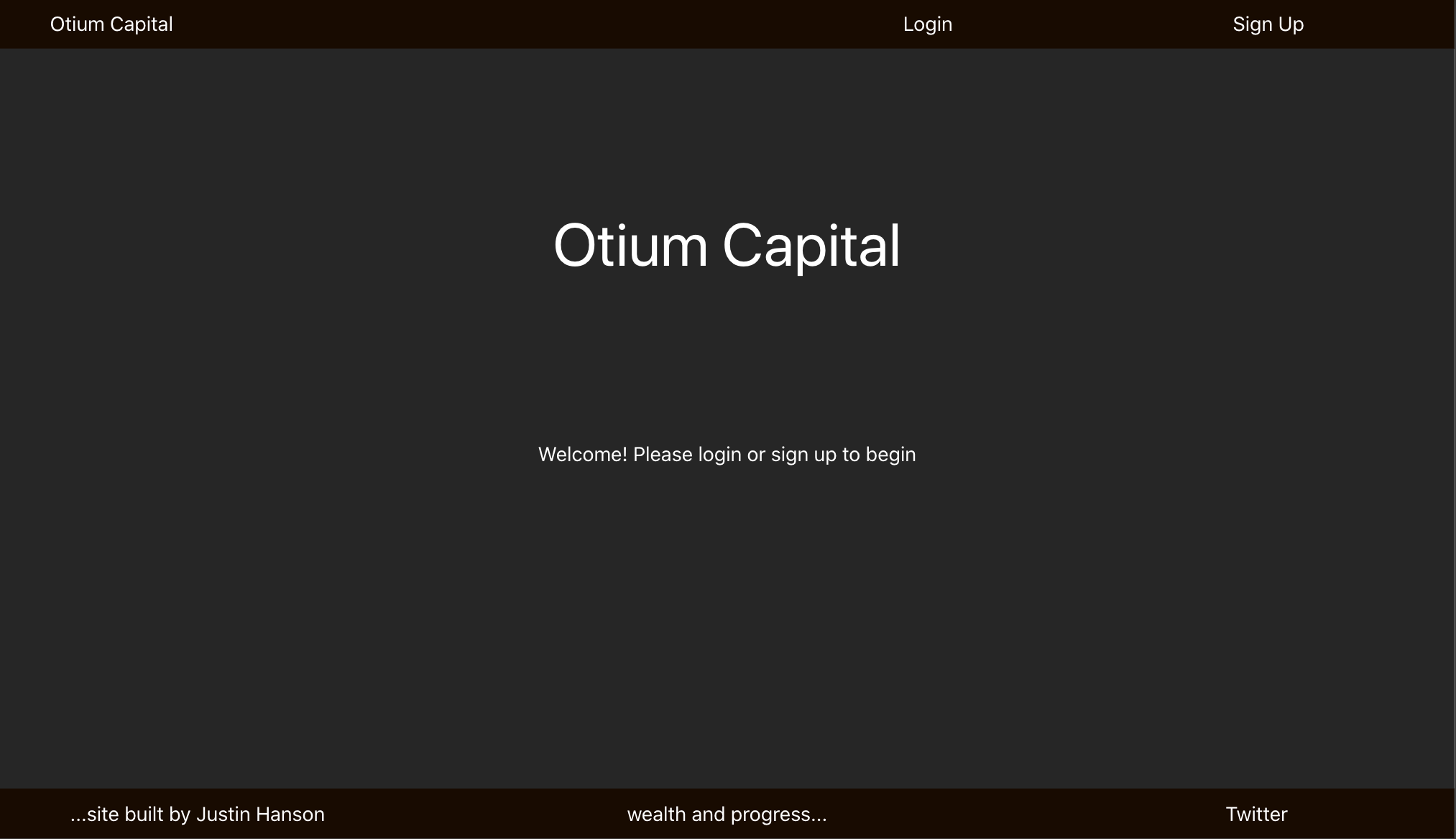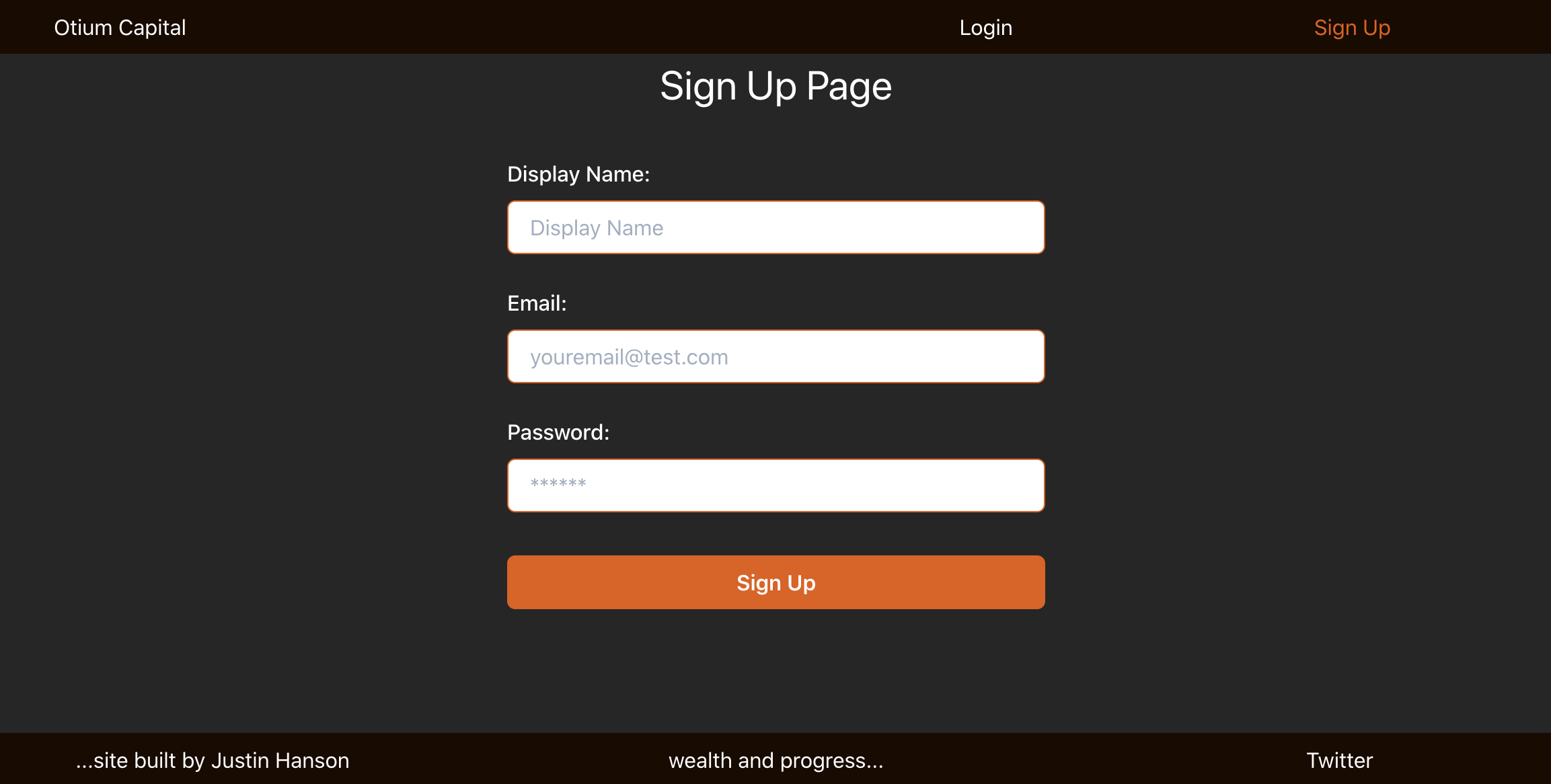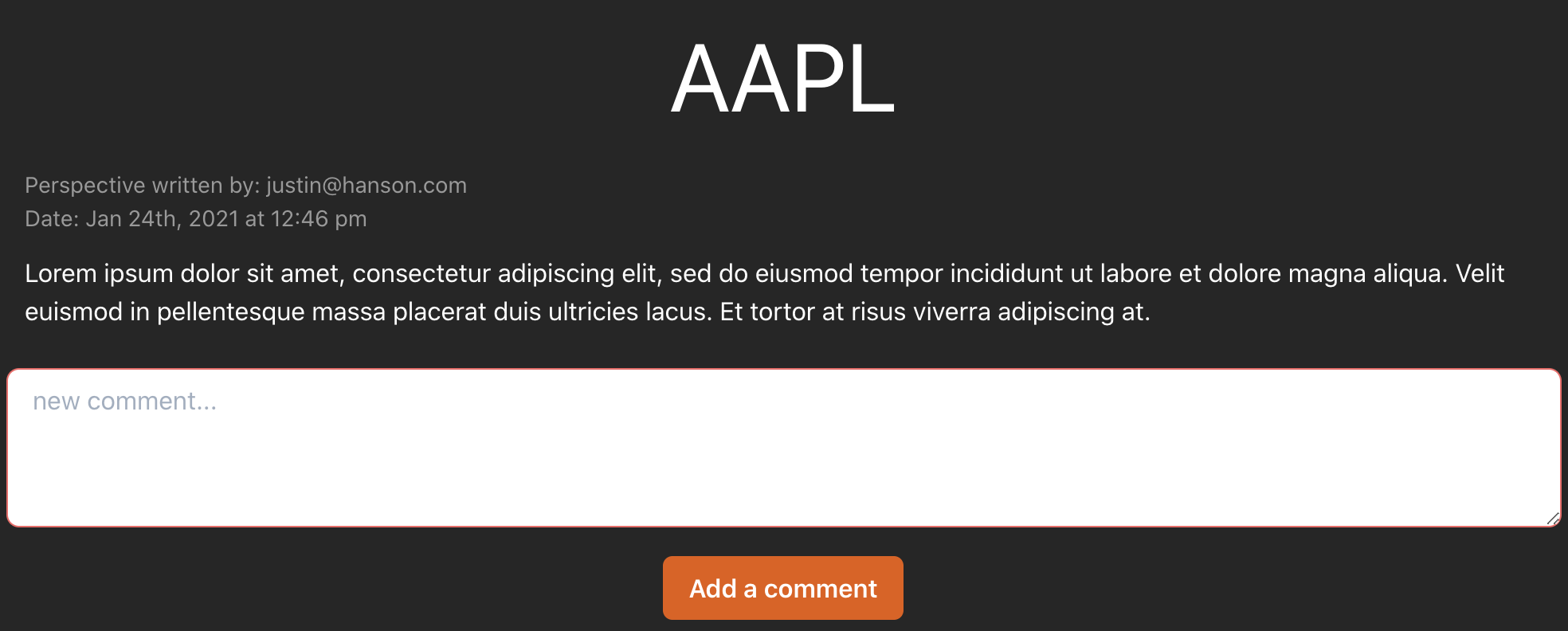Otium
A community dedicated to freeing 'mental capital' from stress and worries over moneythrough
collecting, generating, and sharing ideas for investing on a social media style platform
Installation Instructions
How to use This Application
Technologies Employed
How to Contibute
License Information
Questions
No installition is required - access the web-based application deployed at the following link to get started; https://otiumcapital.herokuapp.com/
- Step 1: Login or Sign Up
- Click the links in the navigation menu (upper right)
- Fill out the corresponding form that is presented
- Click the submit button
- Step 2: Explore
- After logging in or signing up you are presented with a box to enter a Ticker symbol
- Enter a Ticker Symbol for a company of interest to you
- When you click the 'Get Data' button you will be presented with recent price data and
any perspectives others in the community have put forth - Consider searching companies such as 'AAPL', 'TSLA', 'BRK-A' at first to get aquainted with the application
- Step: Contribute
- After being presented with Data on a company, you can now contribute
- The list of perspectives are clickable and when you click you will be taken to a new page
where you can read comments and/or submit your own by filling out the form - You can submit a new perspective by filling out the for presented under the price data
- The front end experience, CSS and responsive design was done with Chakra-ui
- Node.js
- Express.js
- React
- Apollo
- MongoDB
- GraphQL
- react-google-charts
- AlphaVantage
Please contact me through Github if you interesting in contributing. The code repository is located here: https://github.com/hansonjw/otium-capital
No license is applicable for this application
For questions, comments, suggestions, I can be reached at the following:
- Payment platform integration
- 3rd party authentication such as Google
- Enhanced social media style features such as likes and dislikes, up/down-voting, etc.
- Enhance User experience, structure, and flow
Note: This code base was submitted as part of the UC Berkely Coding Boot Camp. Key assignment requirements are outlined below:
* Use React for the front end.
* Use GraphQL with a Node.js and Express.js server.
* Use MongoDB and the Mongoose ODM for the database.
* Use queries and mutations for retrieving, adding, updating, and deleting data.
* Be deployed using Heroku (with data).
* Meet the minimum requirements of a PWA:
* Uses a web manifest
* Uses a service worker for offline functionality
* Is installable
* Have a polished UI.
* Be responsive.
* Be interactive (i.e., accept and respond to user input).
* Include authentication (JWT).
* Protect sensitive API key information on the server.
* Have a clean repository that meets quality coding standards (file structure, naming conventions, best practices for class and id naming conventions, indentation, high-quality comments, etc.).
* Have a high-quality README (with unique name, description, technologies used, screenshot, and link to deployed application).
Finally, you must add your project to the portfolio that you created in Module 20.
You should also consider the following suggestions to help your project stand out:
## CSS Styling
Instead of using a CSS library like Bootstrap, consider one of the following suggestions:
* Look into the concept of **CSS-in-JS**, which abstracts CSS to the component level, using JavaScript to describe styles in a declarative and maintainable way. Some popular libraries include [styled-components](https://styled-components.com/) and [Emotion](https://emotion.sh/docs/introduction).
* Try using a component library, such as [Semantic UI](https://semantic-ui.com/), [Chakra UI](https://chakra-ui.com/), or [Ant Design](https://ant.design/).
* Create all the CSS for your application just using CSS.
Ultimately, it doesn't matter which of these options you choose—it just needs to look professional and be mobile-friendly.
## Payment Platform
Consider integrating the Stripe payment platform. Even if you don’t create an e-commerce application, you could set up your site to accept charitable donations.
**More details about the project will be provided in the lessons for Module 23 in Canvas.**
Other Considerations:
Also, re the requirements and JWT: I would prefer if you used JWT’s in the context of evaluating someone else’s JWTs and not rolling your own for authentication. In my long-winded lecture last Monday, I tried to explain why JWTs are not often a great solution for implementing authentication in your application, but they are a great way for you to implement someone else’s authentication in your app. For example, a great way to implement a login portal in your app would be by using Google Sign On: you will have to read their documentation and struggle through their website instructions (https://developers.google.com/identity/sign-in/web/backend-auth).
BONUS CHALLENGE: benchmark using JWTs for authentication in your app vs. a simple session-based login (e.g. via a session identifier) for your authentication. Which is faster? Which requires more bandwidth? How would you test this?
## Presentation Requirements
Your group will give a 10-minute presentation on your project, with about 7 minutes devoted to the presentation itself, followed by a 3-minute Question & Answer session. Use this Project Presentation Template (Links to an external site.) to address the following:
* Elevator pitch: A one-minute description of your application.
* Concept: What is your user story? What was your motivation for development?
* Process: What technologies did you use? How did you break down and assign tasks and roles? What challenges did you encounter? What were your successes?
* Demo: Show your stuff!
* Directions for future development.
* Links to the deployed application and the GitHub repository.






